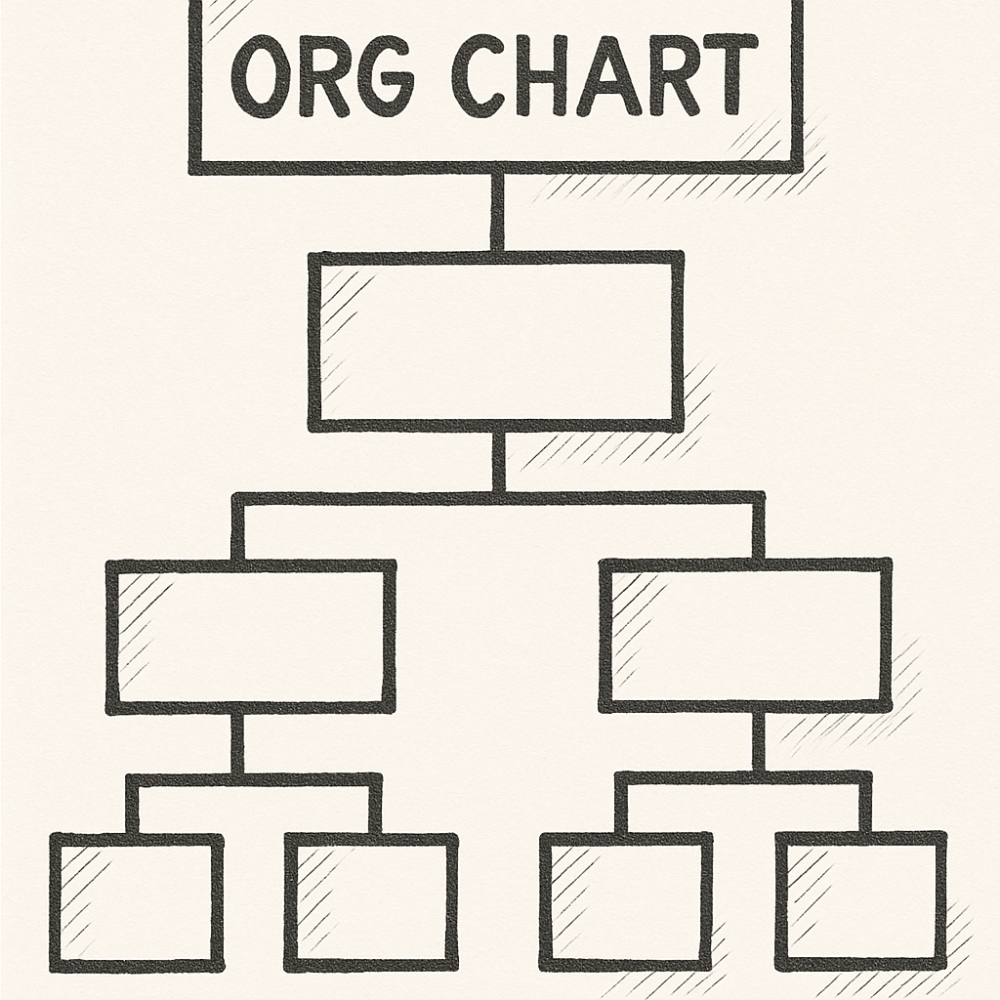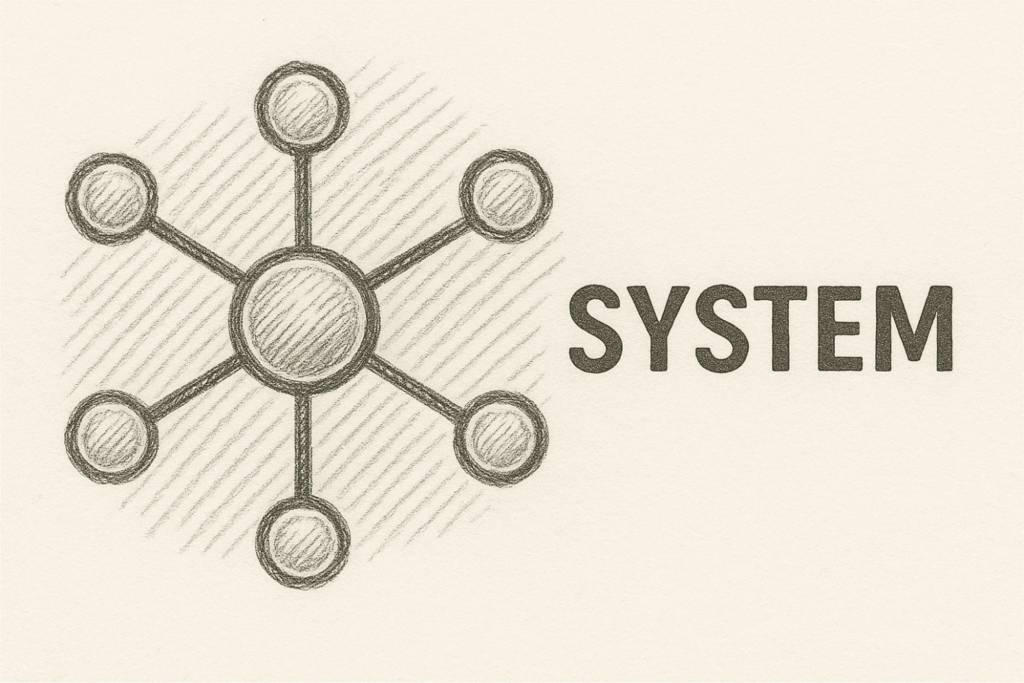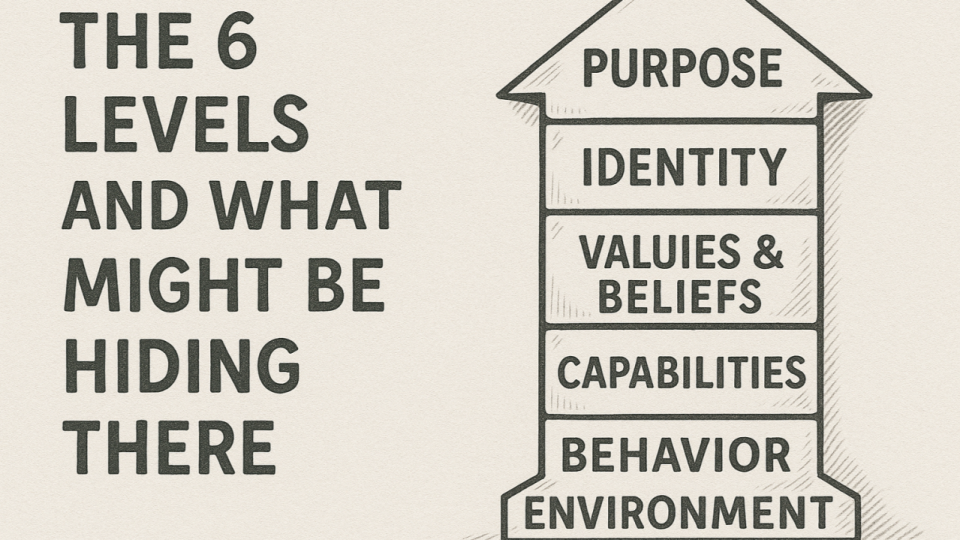Or why your “team problem” is probably something else entirely
Welcome to Small Talks about Big Changes where we talk about real issues, smart tools, and why things sometimes just do not work (even when we really want them to).
Let us start with honest statements:
- Your team is tired or confused.
- Your strategy sounds great, but no one follows it.
- You have changed the org chart (again), but the same problems keep popping up.
If this sounds familiar, there is a good chance you are fixing the wrong part of the problem.
That is where Logical Levels come in. It is a simple model, originally made to help people grow. I have used it with teams, CEOs and full companies and it has become one of my favorite tools for solving problems that do not show up on spreadsheets.

The 6 Levels of What Is Really Going On
Here are the six levels with things people say and real examples I have seen (that go beyond the usual quotes).
1. Environment. Where and when we work
Things I often hear:
- We are flexible! (But everyone still works 9 to 6)
- We are hybrid. (But people feel they must come in to be seen)
- Our new office has sofas. (Morale should be fine now)
Other real examples I have seen:
- A team launched global operations but held all-hands meetings at 7 AM in one time zone and midnight in another.
- A department moved to a beautifully renovated open space and productivity dropped because no one could focus.
- A growing well-known company stuck using paper folders for critical records, while saying they were “digital-first.”

2. Behavior. What we do
Things I often hear:
- We want open feedback. (But only if it is positive)
- We collaborate. (By CC-ing 12 people)
- Our meetings are efficient. (If you enjoy 90-minute status updates)
Other real examples I have seen:
- Leaders asking for creativity but react defensively every time someone suggests change.
- A team that “follows processes” but solves most problems through corridor chats.
- A company where everyone praises ideas in meetings… and then blocks them after.
3. Capabilities. What skills and tools we have
Things I often hear:
- You are now a manager! (Figure it out yourself)
- We bought a new tool. (Nobody uses it)
- We need a dashboard. Any dashboard. Just… build one.
Other real examples I have seen:
- A retail company asking frontline staff to enhance customer support with no data access and zero training.
- HR teams expected to run engagement surveys and analyze results but had no idea how to work with analytics tools.
- A finance team suddenly responsible to run a big project, with no background or project management experience.
4. Beliefs & Values. What we believe is important
Things I often hear:
- We support learning. (But people are scared to ask questions)
- Teamwork is key. (But we only reward individual success)
- We are open to change. (As long as everything stays the same)
Other real examples I have seen:
- A startup that said “fail fast” but fired the first team that missed a deadline.
- A family business with “open communication” as a core value, yet everyone avoided hard topics out of respect.
- A global team that claimed “diversity” but expected everyone to behave the same way in meetings.

5. Identity. Who we think we are
Things I often hear:
- We are a family. (With all the family drama too)
- We are the best. (And scared to admit what is not working)
- We are still a startup! (With compliance training, all bureaucracy and…a corporate lawyer)
Other real examples I have seen:
- A mission-driven company that refused to admit they were becoming corporate, which made newer employees confused about expectations.
- A tech firm that identified as “Risk taker” but struggled with structure, scaling and planning.
- A large enterprise still calling itself “innovative” but every new initiative died in numerous meetings.
6. Purpose. Why we exist
Things I often hear:
- We are purpose-driven. (But no one knows what it is)
- We used to have a clear why (Now it is lost)
- We want to make an impact. But also, please, hit your weekly KPIs.
Other real examples I have seen:
- A public-sector team delivering high-impact work but so buried in reporting they forgot who they serve.
- A high-growth startup scaling fast but none of the new hires could explain why the company existed.
- A regional company where leadership had different visions: one focused on social impact, the other on profit, leading to constant tension.
When to Use This Model
You can use Logical Levels anytime you hear: “Something feels wrong, but we do not know what”.
Best moments for it:
- Strategy sounds good but people are stuck.
- Teams clash and it is clearly deeper than workload.
- You are going through big change and alignment is missing.
- Culture is off but hard to describe.
- Motivation has faded and the usual fixes do not work.
This model helps you stop guessing. It shows where the real issue lives and how deep the shift needs to be.
What You Get from It
After using this model with teams, here is what we walk away with:
- A clear map of where things are strong and where they are not
- Real decisions about what to keep, fix or stop
- A shared language to talk about things that usually stay hidden
- New energy, because clarity brings relief and direction
It is simple. It is powerful. And it works, because it meets people where they really are.

Final Thought
I have used Logical Levels with CEOs, cross-functional teams, founders, HR leaders and bold groups who are not afraid to look deeper. It never disappoints.
What people usually say at the end is:
“This explains so much I just did not know how to name it before”.
So if your team is growing, shifting, or trying to find itself again, this tool might be exactly what you need.
And yes… if you want someone to guide it – I might know a person. 😉
